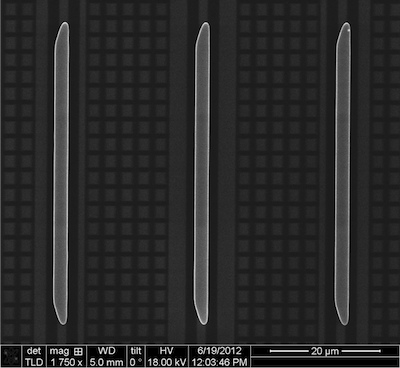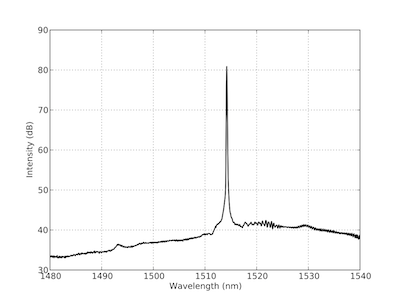|
|
|||||
| intern | ||||||
|
|
||||||
| ||||||||||
Resonant mirror microlasers integrated on siliconResearch Area: Heterogeneous integration technology for silicon photonics , Integrated lasers and LEDs , Silicon photonics for lab-on-chip spectroscopy , Silicon photonics for telecom, datacom and interconnect Main Researcher: Yannick De Koninck Due to its indirect bandgap, silicon is not suited as a laser gain material, making it difficult monolithically integrate light source on the SOI platform. Many solutions to this problem have been proposed, but to date, the most promising short-term approach is the heterogeneous integration of III-V materials on a processed SOI die. Many laser types have been demonstrated successfully by several groups around the world, including Fabry-Perot, DFB, DBR, ring and disk lasers. Most research was geared towards bringing high output power lasers (> 1mW output power) to the SOI platform. Although this is useful in many cases, some applications, such as optical interconnects or lab-on-a-chip, benefit more from low-threshold, low power consumption light sources. This is exactly what we aim for in this project: to design, fabricate and test a low lasing threshold laser (~1 mA threshold current) with high spectral purity (side-mode suppression ratio > 30 dB).

SEM image of fabricated optically pumped devices To reach such ambitious goals, we came up with a novel type of laser design. Instead of using traditional DBR mirrors to select a single longitudinal cavity resonance, our design relies on silicon grating cavities, buried underneath an active III-V waveguide, to provide high and narrow-band reflection. The details of the resonant mirror scheme was described here. This concept was demonstrated in an optically pumped configuration. This particular design required a threshold power on the order of 1 mW and has excellent spectral properties (single mode - SMSR 38 dB). 
Optical output spectrum of the optically pumped device Other people involved: Patents |